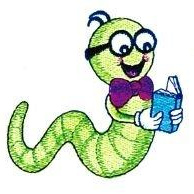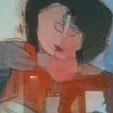I’m happy to announce that I’ve finally had the utmost pleasure of reading this classic! And I now see why it truly is a classic in all senses of that word: First and foremost because it’s widely considered to be a masterpiece, as the quality of the writing has stood the test of time (it’s an ageless beauty worthy of multiple rereadings), it’s released in many different editions over the years, part of curriculums at universities and translated into a bunch of languages. Also, it has inspired and continues to inspire authors worldwide and is considered the first science fiction novel in particular because of the way it thematizes consequences of groundbreaking, ambitious scientific exploration and experimentation. I’m also happy to announce that I loved it so much!
The edition that I’ve read, by the way, not only includes the complete text of “Frankenstein” in part one, but also an introduction with biographical and historical context and a selection of contextual documents. In part two you get a thorough introduction to five different schools of literary criticism: psychoanalytic, feminist, gender, Marxist and cultural. After each introduction, you get an analytical essay from that school’s perspective on the novel. One final essay demonstrates how several critical perspectives can be combined.
Ah, I’ve learned so much! It was like reading several books at once!
So, I will first tell you about my expectations going in. Most of them weren’t met, but some of the critical essays actually shed some light on why that is, which made me feel a lot less disappointed about it. I will then share my response to each section coming before the novel as well as the novel itself. To be honest, I’m doing a lengthy review mostly for myself, but I am hoping that you’ll find my writing useful and/or interesting!
Expectations:
- I expected a lot more science. I was surprised by how little science in general went into anything that happens in the story and how little, if any, people are involved in either speculative technology or scientific discussion and/or exploration. The part of this book that makes it science fiction is fairly small, and I guess it’s fair to say there’s a deep, dark gothic resonance to it at its core. But as far as I can tell, the novel is more like a forerunner of science fiction. A harbinger or herald, if you will. (Perhaps the same can be said for the horror genre?)
Luckily, the Marxist critic, Warren Montag, broadened my understand of this topic and stunted my initial disappointment of the seemingly lack of science. I mean, I was totally wrong in thinking about it in that way, because he points out that Frankenstein is actually “the instrument of science” (390) insofar as his encounters with it in his studies are “a ruse of scientific and technological progress, realizing itself through him but without his knowing it”. It’s as if Victor represents humanity, and the monster represents science, and that it is ironic how the monster calls him slave, when Frankenstein “dreamed of creating a race that would worship him as a master”. The irony of this servitude to science stems from its destructive potential and its indifference to human law and morality. The monster is supposed to be a product of enlightenment and reason and all that entails, but ironically, the novel “rejects one of the most fundamental myths of the Enlightenment, the notion that scientific and economic progress will continually improve the condition of humankind, the idea that once the barriers to knowledge are pushed aside, the conditions for perpetual peace and a universal harmony will have been established.” But instead, “we will not have achieved the freedom we dreamed of but merely a new kind of servitude. […] No longer does the progress of science and, by extension, reason necessarily entail and improvement of the human condition.” Furthermore, “from the moment Frankenstein surrenders to the ‘enticement of science’ (p. 55) he is irrevocably divided from his family and friends. Even the University of Ingolstadt fails to provide anything like an academic community. It is a world of separate, solitary scientists.” (391)
Which means that scientific advancement won’t always be beneficial for human progress, and therefore, “humanity’s greatest achievement may have been to hasten its own destruction.” That’s what the monster means! That’s also what a lot of science fiction teaches us. So, the science fiction element is so much more an essential part of this book than I realized. Even more so due to its marked absence during the monster’s creation.
- Which is another expectation I had: I envisioned the moment of the monster’s creation a little like this: a raving mad scientist with huge glasses, wild eyes and white disheveled hair is holding some kind of weird-looking tool in his hands, all the while he’s laughing maniacally and sweating profusely, thunder and lightning roaring ominously in the background as his creation finally comes to life!
But that didn’t happen at all.
Montag continues: “Utterly absent from the narrative is any description or explanation of the process by which the monster was created. The sequences so central to the film versions of Shelley’s tale, in which the mystery of technology is reaffirmed through iconic figures of electric arcs and bubbling chemicals, have no place at this point or any other of Mary Shelley’s narrative. The process of production is evoked but never described, effectively presenting us a world of effects without causes. […] Technology and science, so central to the novel, are present only in their effects; their truth becomes visible only in the face of their hideous progeny and is written in the tragic lives of those who serve them.” (392)
- And what’s funny is that, for a long time, I thought Frankenstein was the name of the monster, not the scientist’s last name. The monster is simply called “creature”, “Fiend”, “dæmon”, “wretch” etc., which Bouriana Zkharieva, a cultural critic, can explain is “a sign of incompleteness. The lack of name is a lack of social endorsement, of inclusion under the Law of the Father, of self-identity […] The lack of name makes impossible an answer to the questions “Who are you?”. (425) The monster is being excluded from the social world, denied a family, through use of language, as the psychoanalytic critic David Collins, points out: “The monster’s condition is made clear again when he describes his experience as a reader. Recognizing that he is ‘similar, yet at the same time strangely unlike to the beings concerning whom’ he reads, […] he finds himself in an oblique relation to language. If we regard books as language preserved in print, then we can understand why the monster cannot find anyone like himself in them. Books exclude the bodies of the dead and preserve only their words, whereas the monster is pieced together solely out of fragments of corpses. The monster embodies precisely what books cannot preserve.” (290)
His conclusion is therefore that “the monster must remain nameless, for a name comes with a story that tells how one originates in social and sexual relations, in kinship, and thus in language” (290-291), and as such, the monster is “fated to define himself in relation to Victor, and vice versa, each becoming the other’s double, the mirror-self that haunts his every step.” (292)
I also thought there would be a monster bride, but she was never created. I can thank the film versions for that misunderstanding.
I also expected a bunch of furious pitch-forking villagers torching stuff. And more fighting and fast paced action.
Despite all of this, as I hope you’ve understood so far, the novel was more than I hoped it would be. My expectation and vision of the story could easily have made it a bit comical, to be fair, but there was nothing comical or exaggerated about the story and the characters here (like for instance in the first gothic novel “Castle of Otranto”, where I couldn’t take anyone or anything seriously. Barf.). This, on the other hand, was serious and philosophical and full of heartfelt emotions, loneliness, prejudice, alienation, existential despair and love and humanity.
What I also hoped to experience, and actually did experience despite my initial surprise, was a sense of wonder for science, and the power of science, approached with indelicate ambivalence and fear.
Ah, magnificent!
“Introduction: Biographical and Historical Contexts”:
This section reiterates highlights from - and discusses the political background in - the life of Mary Shelley, her mother Mary Wollstonecraft and her father William Godwin, and connects the dots between their ideologies. I had no idea that Mary Shelley and her parents were so intricately tied to politics. (The novel itself too, consequently.) Her “radical” parents especially both seem to have been part of revolutionary movements, and their political views influenced their daughter immensely. Mary Wollstonecraft is a very interesting and prominent historical figure who wrote extensively about women’s rights and the condition of the poor, and I’m now more eager than ever to read Charlotte Gordon’s biographical book “Romantic Outlaws: The Extraordinary Lives of Mary Wollstonecraft and Her Daughter Mary Shelley” to learn more about their lives and their views on gender (femininity, marriage, sex, rights, equality), culture, economy, revolution, philosophy and art. And Mary Shelley had meetings with a poet in a graveyard, for goodness’ sake. I definitely want to know more about that!
“(…) she came to accept an ideology of dependent femininity, and
portions of Frankenstein suggest that a society produces monsters less
by systematic oppression than by inept parenting.” (4)“In Victor’s view, the creature is like the rebellious working class:
he has no right and no claim to the recognition he demands from his
superior.” (16)
“Introduction”:
Mary Shelley herself wrote a short introduction to “Frankenstein” as well, which is placed between the previous section and the text, where she shares personal details of her life, her relationship with her brother, what led to writing the book as well as her thought-process behind it. I appreciated her candor, and I appreciated her wonderful writing even more. My goodness does she have a way with words!
“I busied myself to think of a story, - a story to rival those which
had excited us to this task. One which would speak to the mysterious
fears of our nature, and awaken thrilling horror - one to make the
reader dread to look round, to curdle the blood, and quicken the
beatings of the heart. If I did not accomplish these things, my ghost
story would be unworthy of its name. I thought and pondered -- vainly.
I felt that blank incapability of invention which is the greatest
misery of authorship, when dull Nothing replies to our anxious
invocations. Have you thought of a story? I was asked each morning,
and each morning I was forced to reply with a mortifying negative. “
(23)“Invention, it must be humbly admitted, does not consist in creating
out of void, but out of chaos; the materials must, in the first place,
be afforded: it can give form to dark, shapeless substances, but
cannot bring into being the substance itself (…) Invention consists in
the capacity of seizing on the capabilities of a subject, and in the
power of moulding and fashioning ideas suggested to it.” (23)“Swift as light and as cheering was the idea that broke in upon me. ‘I
have found it! What terrified me will terrify others; and I need only
describe the spectre which had haunted my midnight pillow.’” (24)
A continuation of my review of the novel “Frankenstein”:
I mentioned earlier my main reasons for enjoying the novel; the overarching reason being that it takes itself very seriously. More specifically, whenever the monster discovers the joys of nature and meaning imbued within human life, it’s genuinely filled with curiosity, genuinely invested in our love and our passion with ardor and fascination. Whenever the monster is banished to the depths of existential despair and abjection, its actions are darkly and deeply honest responses.
One observation I made along the way was that this kind of writing is different from more modern writing in more ways than vocabulary. I feel like the story wouldn’t work as well as it did if Mary followed a certain modern doctrine of writing, a certain narrative technique called “show, don’t tell”, which seems to have originated in the 1920’s. Mary Shelley and other gothic/horror writers of old tell you a lot of things, and it still works. They still wrote great literature which still makes me as a reader emotionally and mentally invested. I will never take that technique, or rule, as gospel anymore.
In any case, there’s a story within a story within a story here, which is a prelude to my second observation. It all begins with a letter from a Robert Walton to his sister Margaret. He is on an expedition, by boat, to explore the North Pole. Since he’s never been there before, all he really knows is that it’s a very cold place, but he tries “in vain to be persuaded that the pole is the seat of frost and desolation; it ever presents itself to my imagination as the region of beauty and delight.” So, mental note, his imagination drives him there. He proclaims: “I shall satiate my ardent curiosity with the sight of a part of the world never before visited, and may tread a land never before imprinted by the foot of man. These are my enticements, and they are sufficient to conquer all fear of danger or death”. The veil of mystery gives rise to romance, and by that I mean an idealized, romanticized vision of adventure into unknown lands and the discoveries to be made once there. And then he sees that contrary to popular beliefs, “snow and frost was banished; and, sailing over a calm sea, we may be wafted to a land surpassing in wonders an in beauty every region hitherto discovered on the habitable globe”. Indeed, he may even “discover the wondrous power which attracts the needle; and may regulate a thousand celestial observations, that require only this voyage to render their seeming eccentricities consistent for ever”. (28)
Just like Victor Frankenstein before the creation of his monster, Robert’s sense of purpose is potential for discovery. And it makes me think about what’s actually left to discover nowadays. Humans don’t do these kinds of adventures anymore. We travel, sure, but we know where we’re going, we know what awaits us there. Most places are discovered, imprinted by the foot of man. I mean, we have Google maps. There’s very little mystery and wonder left, and it seems like we can only discover ourselves now as we venture out in our personal journeys in our hearts and minds. That’s the closest thing we get.
And journeys into books such as these, of course!
I am all the same reminded that this is a story written way before internet and before instant long-distance communication. Every time I read a story like this, were people who write a letter must wait a very long time for a reply, I somehow get nostalgic for a time I’ve never lived in. A time where words from our loved ones where more significant, where time itself held more yearning and hope. And a world where the unknown was such a powerful force that anxieties and superstitions rose up in humanity like a great army invading our spirits. A world so much vaster, more mysterious, sensory and wonderful. I also wonder if we’re somehow biologically hardwired to be curious, meant to explore, and that we’re somehow malnourished of discoveries, depleted of wonder. If so, through stories like this, I feel fully replenished.
And of course, I won’t ever forget all the other things “Frankenstein” made me feel and think about: rejection, loneliness, beauty (standards), grief, vengeance, friendship, love, passion, arrogance, pursuit of knowledge, justice, morality, sorrow, misery, wonder, identity… and I can go on and on.
And yes, Victor Frankenstein is a freakin’ scientific necromancer who created a true (but fleshy) artificial intelligence. That’s so cool!
This is what great literature is to me, what it does to me, and that’s why I read.
You know, I enjoyed it so much that I’d like to read it again sometime. But I’d love to read it in Norwegian when I do. I’m curious to find out how my experience of it will change from both a first reading to a second and how it will be like to read it in another language. Will I interpret things the same? Will it be easier to read in my mother tongue? Will I appreciate certain paragraphs even more? Or even love the novel even more? I’m looking forward to engaging with a classic in a different way when the time comes. I am positive that a rereading will offer a new sense of discovery.
Thank you so much, Mary Shelley 😊
Viser 13 svar.
Takk Nikolai, for utfyllende og inspirerende omtale. Finnes denne utgaven oversatt til norsk?
Nyaste utgåve av Mary Shelleys Frankenstein vart utgitt på Skald forlag i 2016 i ei omsetting av Øystein Vidnes. Boka er framleis å få frå forlaget eller i bokhandelen.
Hei! Så hyggelig at du fikk noe ut av det jeg skrev :) Jeg kan ikke finne en norsk utgave av denne, dessverre. Det beste jeg har funnet av analyse/kritikk av Frankenstein på norsk, er en serie artikler i Vagant (https://www.vagant.no/liv-uten-veiledning-frankenstein/) og en artikkel i Sivilisasjonen: https://sivilisasjonen.no/anmeldelse/litteratur/58429/hva-er-det-frankenstein-egentlig-handler-om/
To bra artikler om verket, spesielt den i Sivilisasjonen. Dette var nyttig informasjon med tanke på hva som er mulig å få ut av teksten. Merker også at personen Mary Shelley gjør meg nysgjerrig, tenk at en kvinne fikk til dette på 1800-tallet, det i seg selv sier mye om henne.
Nå kan jeg nesten ikke vente med å ta fatt på historien - tror jeg går for den nynorske varianten.
Takk til deg og alle andre som bidrar til engasjement :)
Så bra du likte artiklene også. Det er så kult at historien om Frankenstein og monsteret kan inspirere til skriverier om så mangt, og at det får en til å tenke og føle alskens ting.
Livene til både Mary Shelley og moren Mary Wollstonecraft virker spennende og lærerike, og en dag skal jeg som sagt få lest boken om dem begge: “Romantic Outlaws: The Extraordinary Lives of Mary Wollstonecraft and Her Daughter Mary Shelley”.
Gleder meg litt til å lese hva du synes om historien også :)
Ja, nettopp, her får en tenke og føle på alskens ting. Det syns jeg Shelly får mesterlig fram i boken. Hun viser hvordan følelsene hopper fra sorg til lykke og omvendt, på bare sekunder, fordi følelsene styres av tankene til karakterene. Victor tenker på monsteret og fylles av vemmelse, for så å tenke på Elisabeth og føler på varme, når tankene hopper til William kjenner han på sorg og fortvilelse, og vi blir med på reisen.
Jeg har notert «Romantic Outlaws» på ønskelisten, og kan bare håpe på at den kommer i en norsk utgave.
Vil du lese hva jeg skrev om Skald sin utgivelse av Frankenstein, finner du den her.
Takk for inspirasjon!
Ja, jeg er helt enig med deg! Mesterlig :) Godt sagt!
Tok en sjekk på Norli og søkte på hennes navn. Fant kun 1 bok på bokmål "Frankenstein - leseuniverset 5-7 : klassikere av Mary Shelley", pocket. Men den var utsolgt fra nettlaget & ikke tilgjengelig i Norli butikker.
På Adlibris fant jeg en bokboks >> "Leseuniverset 5-7; Klassikere - Øvrig, Norsk (bokmål), 2012
Forfatter: Robert Louis Stevenson, Mary Shelley, Daniel Defoe, Rudyard Kipling, Jack London, Alexandre d.e. Dumas. Prislapp NOK 1083.
Beskrivelse: Leseuniverset klassikere er en ny boks med skjønnlitterære tekster. Boksen består av kjente og kjære klassikere, som Robinson Crusoe og Skatten på Sjørøverøya. Tekstene er forenklet og har fått en oppdatert språklig bearbeiding tilpasset målgruppa. Hver bok er på 80 til 100 sider, illustrert og med oppgaver i lesestrategier. Titler i boksen:
De tre musketerer
Skatten på Sjørøverøya
Frankenstein
Robinson Crusoe
Jungelboka
Ulvehunden
Ved videre søking fant jeg på Aslibris.com/no:
Frankenstein - Innbundet, Dansk, 2021, Forfatter: Mary Shelley ( 240 sider), 442 kr.
Generell søking på Mary Shelley, danske bokutgaver på Adlibris
Generell søking på Mary Shelley norske utgaver på Adlibris
Takk for bidrag Kirsten:) Ikke helt lett å skjønne hva du vil formidle, men det er ikke så nøye egentlig. Det er dette avsnittet som Nikolai skrev, som hadde vært interessant å få lest i en norsk oversettelse:
« The edition that I’ve read, by the way, not only includes the complete text of “Frankenstein” in part one, but also an introduction with biographical and historical context and a selection of contextual documents. In part two you get a thorough introduction to five different schools of literary criticism: psychoanalytic, feminist, gender, Marxist and cultural. After each introduction, you get an analytical essay from that school’s perspective on the novel. One final essay demonstrates how several critical perspectives can be combined.»
Ha en god kveld!
Jeg søkte kun på boktittelen Frankenstein - som kun var oppgitt i referensefeltet når man er inne og leser bokomtaler fra Bokelskere Medlemmer. At det i tillegg var oppgitt på bokens forside redaktør - Johanna M. Smith, fikk jeg ikke med meg. Forsøkte kun å være behjelpelig. Når det er sagt så får jeg med meg mangt og meget i slike inspirerte søk - berikelse for meg selv altså.
Forfatteren forstår jeg kan både være forfatter & gi kritiske tilbakemeldinger om egne skrifter.
Her er bokomtalen på Adlibris:
Denne revisjonen av en allment vedtatt kritisk utgave presenterer teksten fra 1831 til Mary Shelleys engelske romantiske roman sammen med kritiske essays som introduserer studenter til Frankenstein fra moderne psykoanalytiske, marxistiske, feministiske, kjønns- og kulturstudier. Et ekstra essay demonstrerer hvordan ulike kritiske perspektiver kan kombineres. I den andre utgaven er 3 av de 6 essayene nye. Teksten og essayene er supplert med kontekstuelle dokumenter, introduksjoner (med bibliografier) og en ordliste med kritiske og teoretiske termer.
I den tredje utgaven er tre av de seks essayene nye, og representerer nyere kjønns-/skeive, postkoloniale og kulturelle teorier. De kontekstuelle dokumentene har blitt betydelig revidert for å inkludere mange bilder av Frankenstein fra moderne populærkultur.
Er det redaktørens essays det refererer til eller tar hun tak i forfatterens kritiske tilbakemeldinger
fra egne skrifter? Det sies ikke eksplisitt. Boken har fått gode tilbakemeldinger og blir sett på som undervisningsmateriale
Mary Shelley
Mary Wollstonecraft Shelley (née Godwin; 30 August 1797 – 1 February 1851) was an English novelist, short story writer, dramatist, essayist, biographer, and travel writer, best known for her Gothic novel Frankenstein: or, The Modern Prometheus (1818). She also edited and promoted the works of her husband, the Romantic poet and philosopher Percy Bysshe Shelley. Her father was the political philosopher William Godwin, and her mother was the philosopher and feminist Mary Wollstonecraft.
Mary Godwin's mother died when Mary was eleven days old; afterwards, Mary and her older half-sister, Fanny Imlay, were reared by their father. When Mary was four, Godwin married his neighbour, Mary Jane Clairmont. Godwin provided his daughter with a rich, if informal, education, encouraging her to adhere to his liberal political theories. In 1814, Mary Godwin began a romantic relationship with one of her father’s political followers, the married Percy Bysshe Shelley. Together with Mary's stepsister, Claire Clairmont, they left for France and travelled through Europe; upon their return to England, Mary was pregnant with Percy's child. Over the next two years, she and Percy faced ostracism, constant debt, and the death of their prematurely born daughter. They married in late 1816 after the suicide of Percy Shelley's first wife, Harriet.
In 1816, the couple famously spent a summer with Lord Byron, John William Polidori, and Claire Clairmont near Geneva, Switzerland, where Mary conceived the idea for her novel Frankenstein. The Shelleys left Britain in 1818 for Italy, where their second and third children died before Mary Shelley gave birth to her last and only surviving child, Percy Florence. In 1822, her husband drowned when his sailing boat sank during a storm near Viareggio. A year later, Mary Shelley returned to England and from then on devoted herself to the upbringing of her son and a career as a professional author. The last decade of her life was dogged by illness, probably caused by the brain tumour that was to kill her at the age of 53.
Until the 1970s, Mary Shelley was known mainly for her efforts to publish Percy Shelley's works and for her novel Frankenstein, which remains widely read and has inspired many theatrical and film adaptations. Recent scholarship has yielded a more comprehensive view of Mary Shelley’s achievements. Scholars have shown increasing interest in her literary output, particularly in her novels, which include the historical novels Valperga (1823) and Perkin Warbeck (1830), the apocalyptic novel The Last Man (1826), and her final two novels, Lodore (1835) and Falkner (1837). Studies of her lesser-known works such as the travel book Rambles in Germany and Italy (1844) and the biographical articles for Dionysius Lardner's Cabinet Cyclopaedia (1829–46) support the growing view that Mary Shelley remained a political radical throughout her life. Mary Shelley's works often argue that cooperation and sympathy, particularly as practised by women in the family, were the ways to reform civil society. This view was a direct challenge to the individualistic Romantic ethos promoted by Percy Shelley and the Enlightenment political theories articulated by her father, William Godwin.
PS! Boken kan kjøpes på Amazon.com som Kindle versjon ($ 2,56)og man trenger ikke laste den ned. Jeg har flere Kindle bøker og leser de på PC'en på Amazons nettside som er fult mulig.
Du er behjelpelig som alltid, og nå tok du deg tid til å dele mer av dine funn. Et virkelig utfordrende liv Mary Shelley har hatt må jeg si.
Interessant spørsmål du stiller, som jeg håper Nikolai svarer på :)
Jeg er litt usikker på om jeg skjønner spørsmålet, men essayene er ikke skrevet av hverken redaktøren eller Mary Shelley; de er skrevet av ulike personer (akademikere, kritikere osv.)
Mary Shelley var ikke en katt for sin hatt som kvinne - særdeles på den tiden. Leste om henne på Wikipedia den engelske siden - o'boy var hun forut for sin tid. En riktig feminist. Hun var virkelig radikal eller var det livet som førte til det?
En kvinne er ikke født mental sterk > alt kommer an på hva som blir kastet mot en underveis mens man lever livet man har fått utlevert.









































